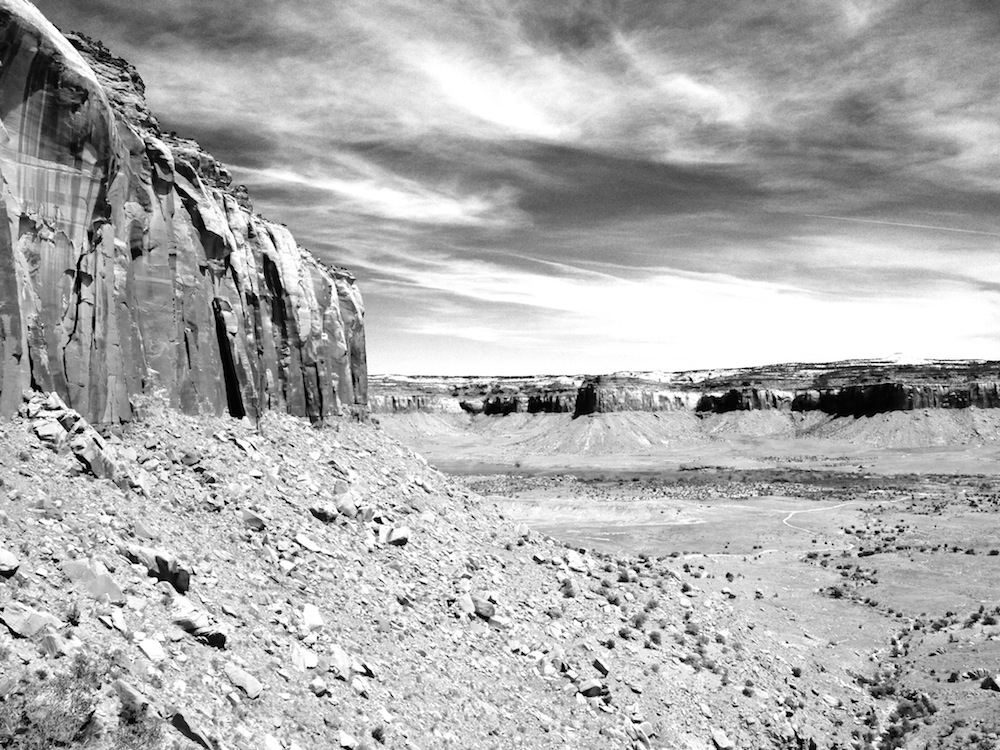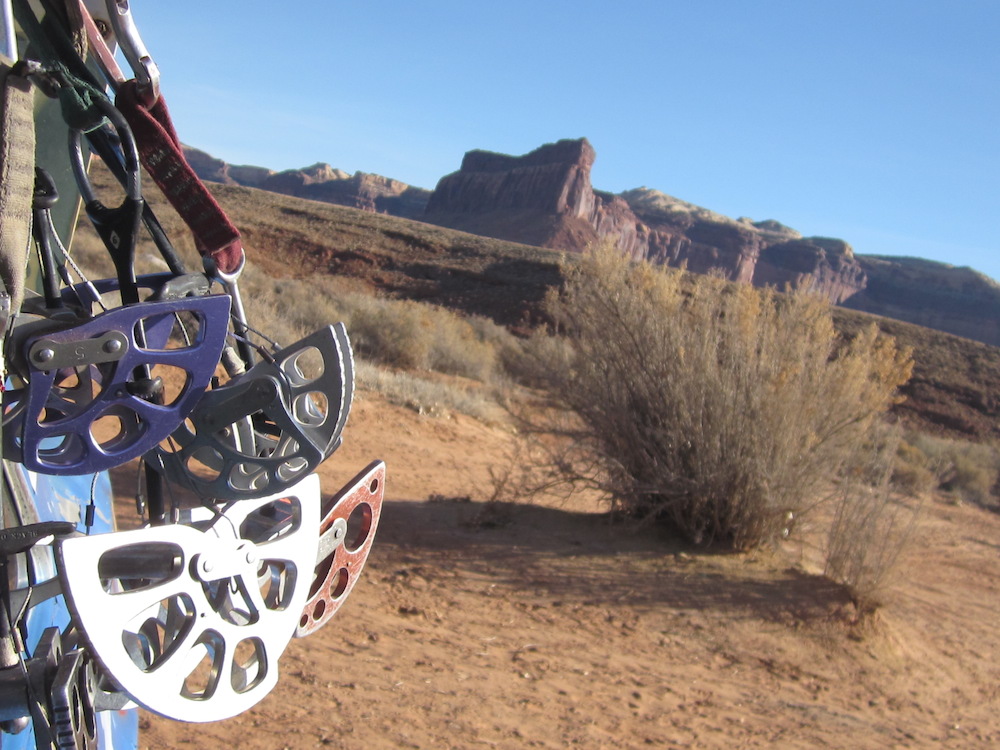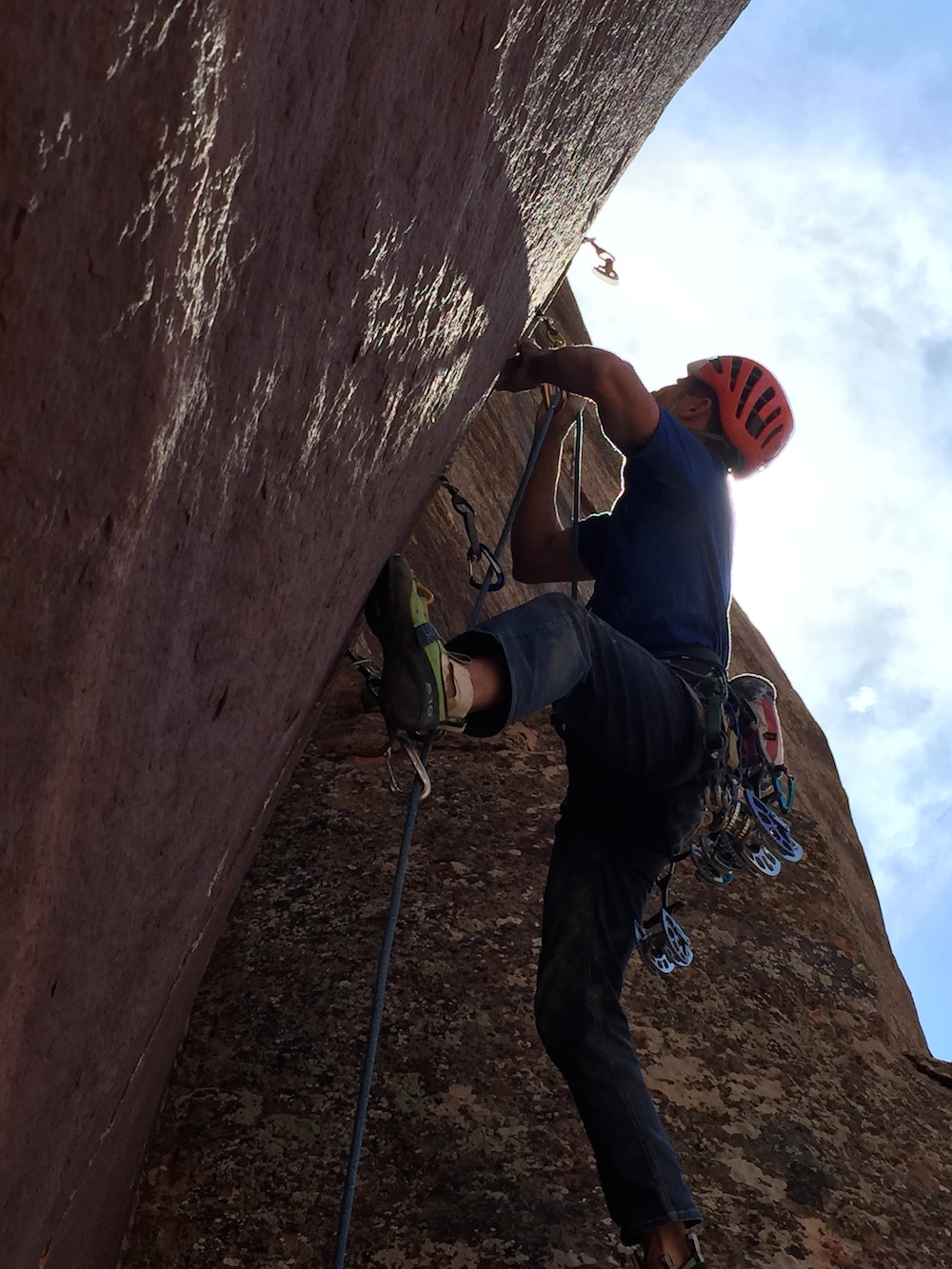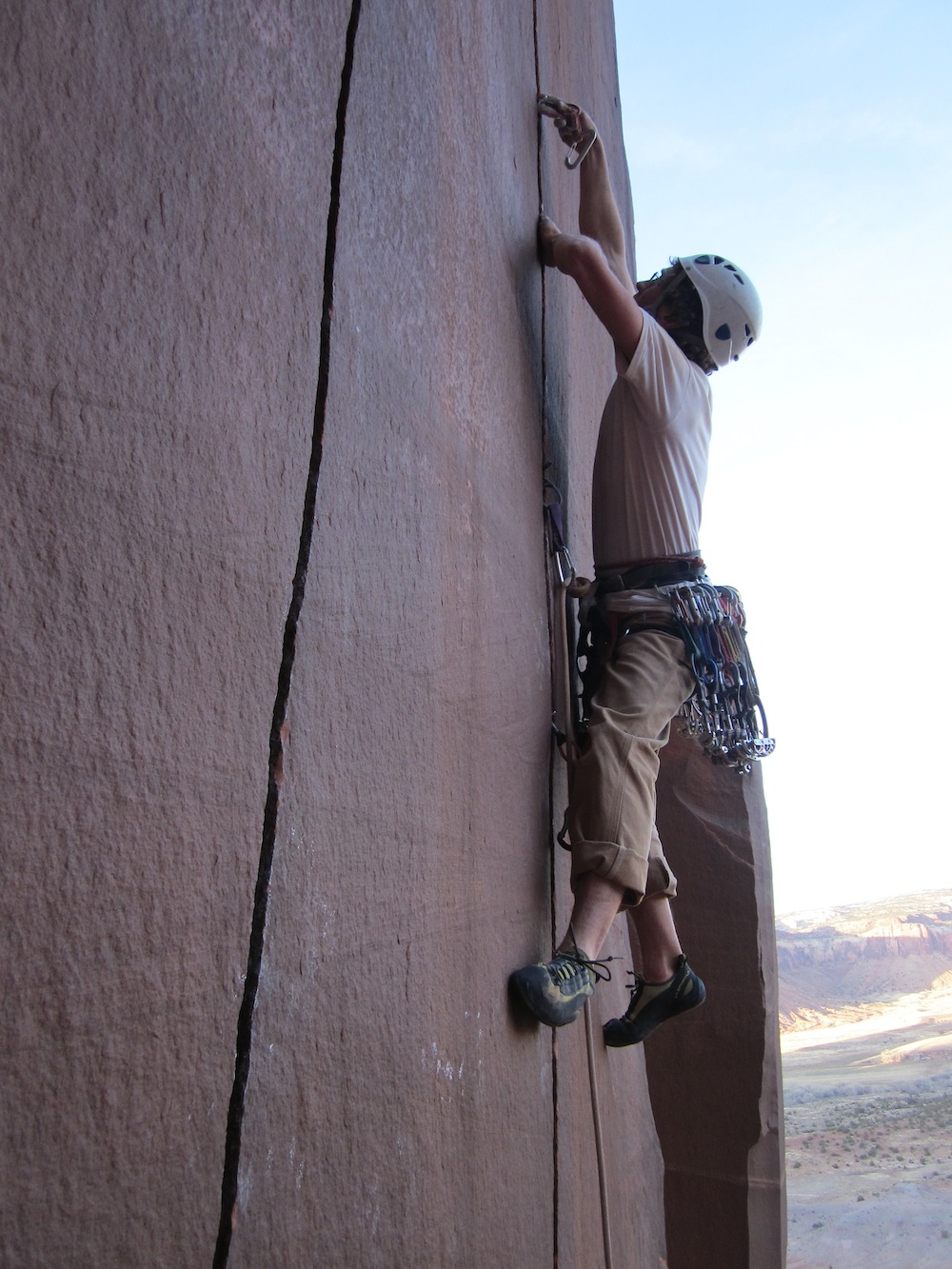Fall Mecca: 10 Tips for Climbing Indian Creek like a Local
By Luke Mehall
Fall means one thing to the desert climber: Indian Creek season. Located about an hour southwest of Moab, Utah, the Creek is the center for the Colorado Plateau desert climbing scene. Every year, it gets a little more popular, but the good news is there are plenty of cracks for everyone. If a climbing road trip is on your docket this winter, consider adding this iconic spot. Here are some tips for climbing at the single-pitch crack-climbing Mecca of the world like a local.

Bring the right kind of tape
For 99% of Indian Creek climbers, quality athletic tape is as important as a solid rope and rack. Want to figure out if you’re in that 1% who can climb without it? Go ahead, but don’t blame us if your hands are a bloody mess afterwards.
Most athletic tapes from the grocery store will work okay. I recommend stopping into a local climbing shop in Moab and picking up some Mueller Euro Tape. This stuff has much more adhesive and works so well your hands will still be covered in some adhesive for the following day.
Know what to do
We’re not talking about using the magical golden Camalots here (I’ll get to that in a second); we’re talking about poop. The desert landscape is very dry and fragile and does not break down human waste very well. That means we need to be using the existing bathrooms or packing out our poop in waste bags, a.k.a. wag bags. If you’re camping at Super Bowl or Creek Pasture, you’re all set; these places have installed bathrooms. There are also bathrooms at the beginning of the Beef Basin road, and at the Supercrack/Battle of the Bulge parking lot. Other than these areas, you’re on your own, and you must be responsible for packing out your poop.
Cams

More than any other traditional climbing area in the world Indian Creek demands a wide variety of cams. Passive gear is hardly ever used, save for an occasional micro nut in a thin crack. Up to as many as 12 cams of the same size can be needed for a single pitch. Obviously hardly anyone has that many of his or her own rack, so it’s necessary to roll out with a posse or borrow someone’s rack. You really can never have too many cams at Indian Creek. Another tip: bring a variety of brands, as the cracks are so size specific that certain brands complement each other with their different sizes.
Rain
Climbing after it rains in the desert requires some careful considerations. Since the sandstone is delicate, it’s dangerous and damaging to climb on immediately after a rainstorm. Sun and wind do the best to dry out the rock after a storm, so walls that get sun exposure are the best bet after a storm passes through. When in doubt, leave the cams in the car and take a hike to explore the vast beauty that The Creek has to offer, or go into Moab and eat some Milt’s, which is never a bad decision.
Shoes

The Creek typically requires a quiver of climbing shoes. If you’re climbing thin, finger cracks, a slipper is a good idea, but if you’re an off-width freak, a high-top shoe that protects the heel is the best bet. There’s hardly any reason to do much edging typically, so most of the time you’re jamming whatever part of your foot you can get into the crack. Aggressive shoes are basically worthless here.
Navigating the crowds
Like any modern climbing destination The Creek has its pockets of crowds. In the busy seasons (October-November, April-May) hoards of climbers are pulled to the Supercrack/Battle of the Bulge area. Part of this is for a good reason, there are quite a few “moderate” routes on these two walls. (I put moderate in quotation marks because there are hardly any true moderates in Indian Creek. The easiest climbs are in the 5.10 neighborhood, with only a couple 5.9s.)
However, on a really busy day take a look at what’s considered the main guidebook for the area, or at Mountain Project (more on those resources in a second), and find another wall to explore. If anyone is complaining about crowds at The Creek it is for their own lack of trying. There are more than enough splitter cracks to go around there.
Use more than just the guidebook
The Mountain Project, used in conjunction with the guidebook’s descriptions, is your best resource for crack descriptions. Then, it’s up to you to bring what you instinctively think you might need for that route.
Style
Indian Creek is often referred to as a sport-trad climbing area. There’s some truth to that, it’s very easy to place gear often, making it a safe place to push your limits. That said, if you can’t lead a popular route without hanging on every piece, find something else to climb, and work up to that route when you’re stronger. Your fellow climbers at the crag will be grateful. Nothing is worse than wanting to get on the classic climb of the wall, and find it’s being hang-dogged by someone who is way out of his or her element. If you can’t lead it efficiently, save it for another day, or hop on it on toprope.
Environment
Indian Creek is a fragile environment where a single footstep can leave a mark for years. You’ve heard the statement “leave only footsteps” but in The Creek it’s best to not even do that. If you’re off-trail be sure to avoid the magical black cryptobiotic soil, which is essential to the health of the desert floor. When in doubt find an arroyo (a wash) and hike it in. Camping in designated areas is important as well to isolate our impact to already developed areas.

Rest days
The Creek beats your body up like no other climbing area. Some people can climb day after day, but most of us need some R&R between our climbing pursuits. If you are low on food and water, Monticello is the closest town, but they are lacking in the gear shop and food departments. Moab is a little farther away, but provides more essentials and entertainment.
If you’re all stocked-up on food and water the Indian Creek corridor has endless canyons and walls to explore. You never know what you might find hiking around; there are impressive forgotten petroglyphs, and low-key ruins from thousands of years ago. The southern entrance to Canyonlands National Park is just down the road and offers endless exploration into the wonders that this desert holds.
Luke Mehall is the author of The Great American Dirtbags and Climbing Out of Bed. He is also the publisher of The Climbing Zine. Mehall has been exploring Indian Creek for 16 years and hopes to continue to for the rest of his life. He lives in Durango, Colorado.
